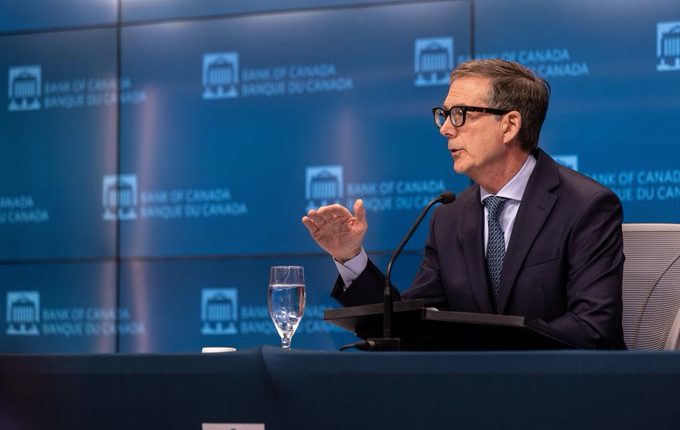- On Wednesday, the Bank of Canada announced that it was not raising interest rates for the month because of easing inflation
- Canada’s interest rate stands at 4.5 per cent
- Inflation rate has dropped from a peak of 8.1 per cent in June 2022 to 5.9 in January 2023
- However, external forces may turn this positive action of the central bank to the disadvantage of Canadians
Wednesday’s announcement by the Bank of Canada of no increase in interest rate was expected but has far-reaching implications.
The central bank maintained the interest rate at 4.5 per cent, the first time in one year. At its previous policy meeting, the Canadian central bank had given indications that it would pause its aggressive rate hikes, given the prevailing stabilization or easing of inflation, a sign that its efforts were yielding dividends.
Inflation, which hit a peak of 8.1 per cent in June 2022, began a gradual descent in July when it dropped to 7.6 per cent. In August it dropped further to 7.0 per cent. In September it dropped marginally to 6.9 per cent and remained unchanged in October. In November, it fell marginally again to 6.8. But by December, it began a visible descent, falling to 6.3 per cent. In January 2023 it fell to 5.9 per cent.
On an annual basis, Canada’s inflation rate was 6.8 per cent in 2022. Even though that figure was better than what many of the big economies recorded last year, it was a far cry from the inflation figures Canada had in 2021 (3.4 per cent) 2020 (0.7 per cent).
One direct implication of the pause on interest rate is that home owners, still paying off their mortgage, will heave a sigh of relief, as banks won’t increase lending rates. The suspension will also create some stability in the economy, even if temporarily, as cost of fund remains virtually unchanged.
However, while the Bank of Canada may want to lean toward leaving the interest rate untouched or even reducing it, external forces may make that action work against the Canadian economy. For example, what is happening in the economy of Canada’s southern neighbour, the United States, has a direct effect on Canada’s economy.
The recent approach to interest rate hikes by the leadership of the central banks of both countries has been opposite. While Tiff Macklem, Governor of Bank of Canada, favours a pause on rate hikes, Jerome Powell, Chair of the U.S. Federal Reserve, favours more hikes. Powell told a congressional committee in Washington, D.C., recently that he has no plans to suspend hikes in interest rates. But given the reaction his comment received, he toned down his message on Tuesday by saying that the soon-to-be-released data from government on employment as well as February inflation figure would determine the action to be taken by the Federal Reserve on interest rates.
While interest rate in Canada is 4.50, in the U.S., it stands at 4.75 per cent. In January, the U.S. inflation figure dropped to 6.41 per cent
If the U.S. goes on with rate hikes as Powell has indicated, it is projected that the country’s interest rate may rise to about 5.5 by the middle of the year, which will be a full percentage point above that of Canada. That will adversely affect the value of the loonie.
With a high percentage of Canada’s imports, especially food, coming from the U.S., a weakened loonie will create another problem for Canadians, as their imports will come in at a high cost, shooting up inflation and cancelling all the efforts at stabilization.
That is the dilemma the Bank of Canada has to wriggle out of in the nearest future as it watches events pan out in the United States. It reminds one of driving, where the safety of the driver is not dependent alone on the actions of the driver but also the actions of other road users.





